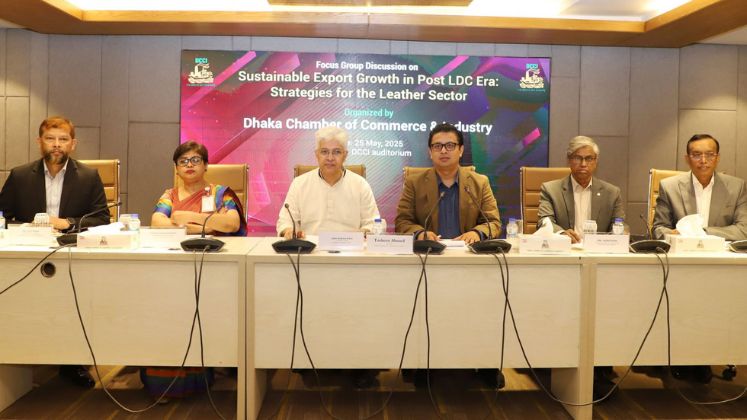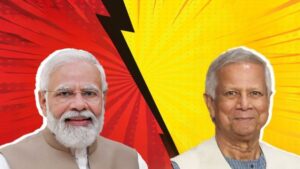
Bangladesh’s leather industry, long considered a sleeping giant in the country’s export economy, has the potential to ramp up its exports to US $ 5 billion annually by 2030 and possibly double that figure to US $ 10 billion by 2035, if supported by policies similar to those that propelled the ready-made garment (RMG) sector. This optimistic outlook was shared by industry leaders during a high-profile meeting organised by the Dhaka Chamber of Commerce and Industry (DCCI).
The event, titled Leather Industry Strategy Determination: Sustainable Exports After LDC, brought together policymakers, business executives, and stakeholders to chart a strategic path forward amid challenges such as outdated infrastructure, environmental concerns, and the lack of international certifications like the Leather Working Group (LWG) certification.
Industry representatives emphasised the sector’s untapped potential but highlighted critical barriers to growth. Syed Nasim Manzur, former MCCI president and chairman of Landmark Footwear Ltd., pointed out that the absence of LWG certification damages the industry’s image abroad, leading to lost investments and lower premium pricing. He called for streamlined exit policies to allow distressed firms to exit and free up resources for growth.
Environmental infrastructure also remains a concern. Md Saiful Islam, Chairman of Bangladesh Industrial Service Corporation (BSCIC), discussed the limitations of the Central Effluent Treatment Plant (CETP) in Savar, which currently handles 14,000 cubic meters of effluent daily but faces surges of up to 35,000 cubic meters during peak seasons. Plans to expand capacity and establish additional Effluent Treatment Plants (ETPs) are underway, with government support urged to ensure compliance with international environmental standards.
Lack of a robust supply chain was another recurring theme. Industry leaders noted that reliance on imported raw materials increases lead times and hampers competitiveness. Md Nurul Islam, CEO of the Bangladesh Tanners Association, stressed that achieving international certifications like LWG and improving backward linkages are essential for boosting exports.
Policy reforms, including bonded warehouse facilities similar to those in the RMG sector, were proposed to facilitate value addition and streamline customs processes. Larger companies were urged to lead by example in environmental compliance, while government support for smaller enterprises was deemed critical.
Officials from the government highlighted efforts to enhance the sector’s growth prospects. Industries Adviser Adilur Rahman Khan emphasised the ministry’s commitment to creating a supportive policy environment that encourages technological upgrades and environmental compliance. Additional Secretary of the Ministry of Commerce, Dr. Nazneen Kausar Chowdhury, underlined the importance of addressing environmental and labor standards to unlock the sector’s full potential in the post-LDC era.
The Bangladesh Investment Development Authority (BIDA) also expressed optimism, noting that the leather sector has been included in its investment “heatmap,” signaling efforts to attract foreign direct investment (FDI). BIDA’s Director General Md Ariful Haque called for coordinated efforts between the public and private sectors to realise the sector’s growth ambitions.
Industry associations and business leaders called for innovation and market diversification, emphasising that environmental upgrades such as CETP and certifications like LWG will naturally attract FDI and improve competitiveness.
Summing up the consensus, DCCI President Taskin Ahmed stressed that with bold reforms, unified efforts, and a focus on sustainability, Bangladesh’s leather industry could become a US $ 5 billion export powerhouse by 2030, with the potential to double that figure by 2035. The gathering ended with a shared sense of resolve, as stakeholders committed to seizing the moment and transforming the sector into a global leader.






